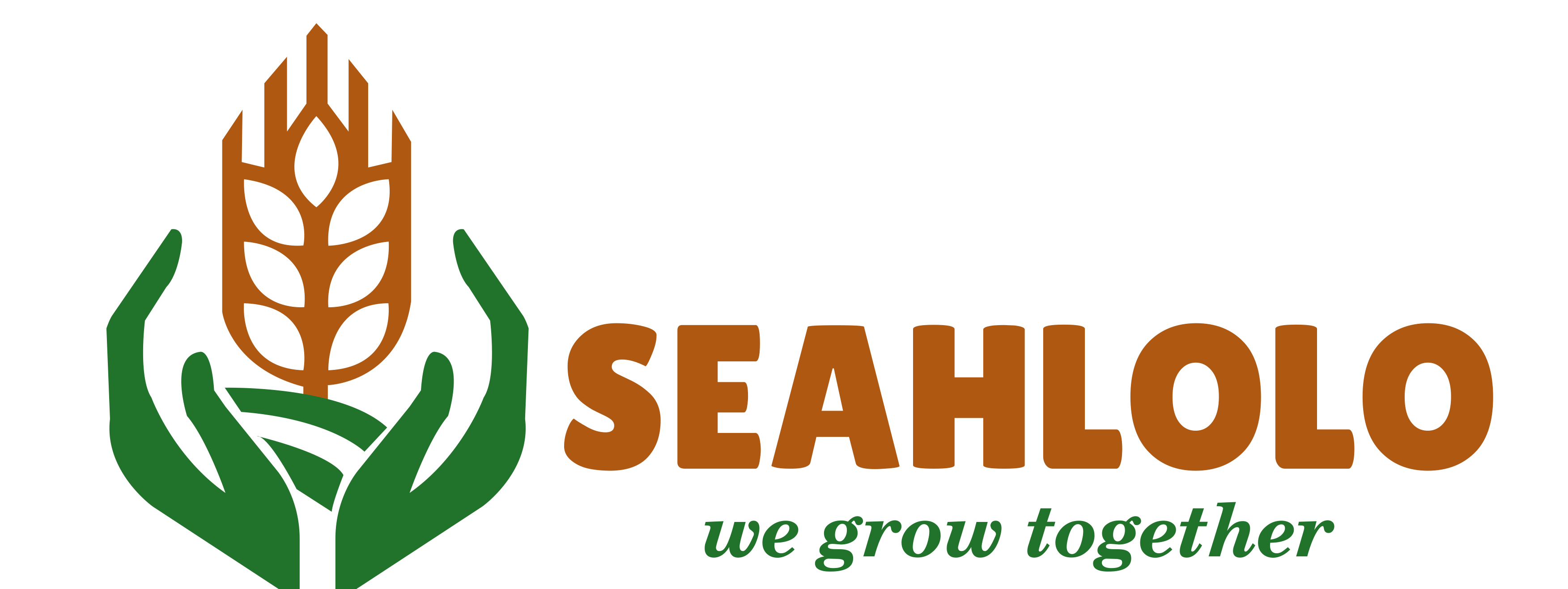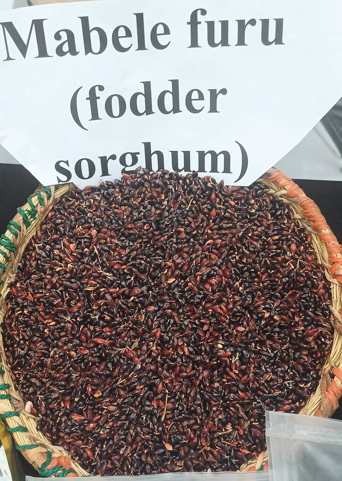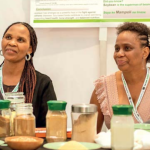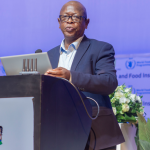![]()
Scientists in the country are increasingly focused on improving the yields of the main grains; wheat, sorghum, beans, and maize, this emerged at the recent APPSA Scientific Conference, coordinated by CCARDESA, which provided a critical platform for researchers to share their findings and innovations on these staple crops.
Among the scientists who took the stage was Benezwa Mofoti, a young plant breeder and crop scientist.
Mofoti acknowledged that sorghum production in Lesotho has seen significant fluctuations in recent years due to a range of factors such as climatic conditions, soil fertility, and farming practices.
To address these challenges, she explained that scientists across the SADC region are collaborating to improve yields and build climate resilience in crop production.
For climate-smart agriculture purposes, Mofoti revealed she studied the behaviour of Lesotho’s indigenous sorghum genotypes (that is, sorghum seeds native to the country) with the goal of identifying varieties that perform well in both yield and climate resilience.
Opening the conference, Dr. Majola Mabuza, representing CCARDESA, stated; “The aim of the Scientific Conference is to serve as a platform for agricultural researchers, policymakers, farmers, private sector actors, and development partners to share knowledge, collaborate, and discuss innovative strategies aimed at enhancing agricultural productivity and resilience in the Southern African region.”
In alignment with this goal, Mofoti’s research revealed that, of the 33 genotypes collected from across Lesotho, only two varieties were both stable and high-performing. These were: ‘Mabele a manala a Ribaneng a Makhubelu’ and ‘Seqhobane se sesoeu sa sekhutsoane sa Mashai Moreneng’.
Although these indigenous varieties do not have English equivalents, they represent an opportunity for Lesotho to achieve self-reliance in sorghum production by using crops that are naturally adapted to local conditions.
“We need to ensure that we breed sorghum genotypes that can thrive in all districts of Lesotho and depend less on hybrid genotypes,” Mofoti said.
She highlighted the selected genotypes that performed consistently across all breeding zones as; Siloe (Southern Lesotho): Elevation 163m, Arenosols soil Nyakosoba (Central Lesotho): Elevation 203m, Cambisols soil, Mahobong (Northern Lesotho): Elevation 168m, Luvisols soil.
Her study was conducted under varying temperature and rainfall conditions, simulating both dry and wet seasons.
According to the International Production Assessment Division (IPAD), a foreign agricultural service under the U.S. Department of Agriculture, sorghum production in Lesotho during the 2022/2023 season involved 15,000 hectares harvested at an average yield of 0.27 tons per hectare. This reflects a decline compared to the five-year average (2019/20–2023/24) of 16,000 hectares and 0.53 tons per hectare.
Under the APPSA framework, each participating country establishes Regional Centres of Leadership (RCoL) in a commodity area that distinguishes it as a leader and from 2019 to 2025, Lesotho has taken the lead in horticulture and horticulture-based crop systems.
Research such as Mofoti’s is supported by World Bank funding under the APPSA program.
“The genotypes are now available at the APPSA seed bank for farmers to begin exploring with the genotypes no matter their location. The goal here is to breed seeds that survive both dry season and rainy season so as to avoid fluctuating yield.” She said.
While her research did not initially include pest and disease control, Mofoti emphasised that the genotypes showed promising performance under environmental stresses, particularly those related to climate.
This marks an important step toward the adoption of climate-smart sorghum seeds by both small-scale and commercial farmers, and toward popularising indigenous varieties across the country.
“Lesotho is visibly adopting the use of hybrid seeds and have neglected the indigenous seeds. It is high time we begin using indigenous sorghum seeds and explore the possibility of ownership on genotypes that survive the extremes of climate change and possibly reduce the importation of hybrids. For instance, in dry seasons, breeders fall into the trap of importing genotypes from arid climates like Botswana then experience unsustainability in seasons of heavy rainfalls,” she observed.
According to the Access to Seeds Index, Lesotho maintains a community-based seed system, involving associations and cooperatives supported by NGOs that help with seed multiplication and establishing community seed banks.
Thus, the APPSA gene bank plays a pivotal role in preserving indigenous seeds.
As Mofoti explained, these local varieties could help sustain and maintain sorghum yields, strengthening Lesotho’s ability to withstand climate shocks and ensuring a more food-secure future.




